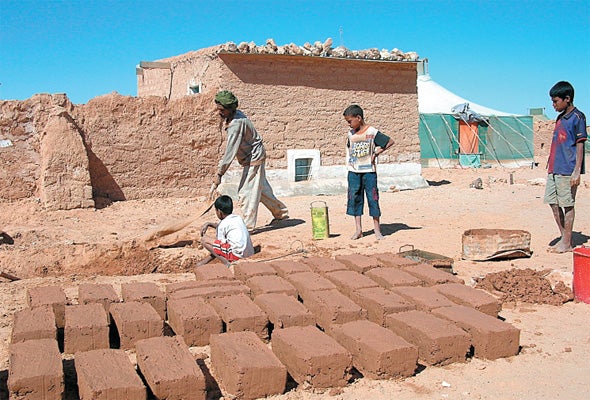Disaster relief
Helping the people who need it most

Few rewards are as fulfilling as seeing your efforts making a difference to the lives of people less fortunate than you. Disaster relief work offers technical professionals the opportunity to use their skills to help the people who need it most. Take engineering graduate John Leung. He didn’t want a regular job: he wanted to use his civil engineering degree in a more global context instead. So, he got a job with an engineering consultancy that was favourable towards overseas projects.
“Reading stories of people that had been involved with projects in developing countries really brought home the idea that a career choice did not have to mean choosing between a regular job with an engineering firm or having to take the leap of faith into an exciting – but not necessarily secure – job in the world of disaster relief, development and humanitarian aid,” Leung says. “I realised I could do both.”
Leung had been involved in projects in El Salvador with a team from his university, which meant he had enough experience to get an assignment with an organisation in the Dominican Republic, through disaster relief organisation RedR.
“It was a six-month posting on a project involving the construction of a new building to extend the existing school in the community, consisting of two classrooms, a plant room and a toilet block,” Leung explains. “My role was as a construction supervisor, which expanded to include project management, engineering and accounting duties. Working with the local team, I learned how things could be done just as efficiently without all the usual equipment at home.”
A few months after Leung returned to his job in the UK, Tropical Storm Noel struck the Dominican Republic, destroying hundreds of homes. The classrooms Leung built stood firm and became emergency shelters for the homeless; he and the school are very proud of this achievement, knowing that lives were saved through engineering.
“When I first applied for this posting through RedR, there were two other positions open – one was full time in Pakistan following the Kashmir earthquake and another was a one-year posting in the Democratic Republic of Congo,” says Leung. “Both of those are more typical disaster-relief and humanitarian projects. At the time however, I felt it would have been a step too far too soon. In such a critical situation it is absolutely vital that the relief worker is 100 per cent prepared, as there is very little room for learning the ropes. A lack of preparation can mean it is actually possible to add to the problems rather than reduce them.”
For engineers and built-environment professionals, a disaster-relief assignment can reaffirm their commitment to their profession and help to develop new skills. In general, there are six things you need to do to get involved in disaster relief: get professional experience in the UK; get specialist training in relevant technical issues (such as first aid or car maintenance) as well as the basics of humanitarianism and personal security; network with others already in the sector, particularly when choosing which relief agencies to approach; research and stay abreast of the issues, such as news from Darfur or Somalia; seek out cross-cultural experiences, such as working with your local refugee support group or getting active travel experience away from typical holiday resorts; and stay enthusiastic, because you’re going to get a lot of rejections before you get a yes.
Andrew Lamb, an adviser at RedR, adds: “You have to be careful about how you proceed – disaster relief rarely becomes a career, usually taking the form of a series of projects. John [Leung] has the right approach of committing to work for an engineering firm as well as looking for relief assignments. He prepared well for his assignment – speaking to construction experts and using guides such as RedR’s Engineering in Emergencies handbook. Because you have a massive impact on people’s lives, the right preparation and training is invaluable.”
Leung says: ”Having carried out this posting in the Dominican Republic and at the same time gained more experience back here in the UK, I am a lot closer to that reality of one day being able to make a real difference when it is urgently needed.”
Sarah Milnes is the communications manager at RedR, www.redr.org.uk
Join our commenting forum
Join thought-provoking conversations, follow other Independent readers and see their replies
Comments
Bookmark popover
Removed from bookmarks